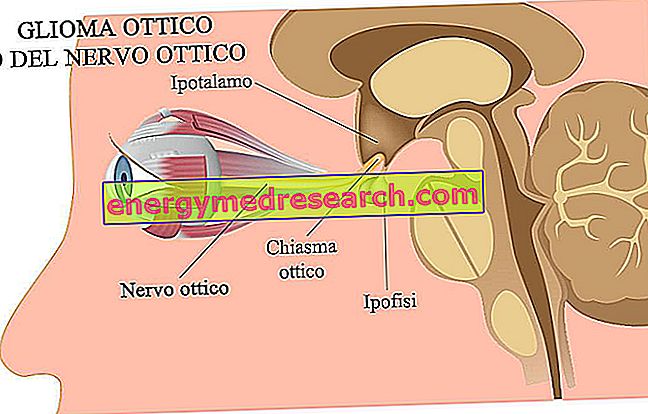
The optical glioma is a primary brain tumor, which originates from cells of the glia of the central nervous system (astrocytes, oligodendrocytes, ependymal cells and microglia cells) located near one of the two optic nerves.
The optic nerves - constituting the 2nd pair of cranial nerves - transmit the visual information, coming from the ganglion cells of the retina (located on the bottom of the eyeball), to the visual cortex placed on the occipital lobe (brain region responsible for processing stimuli electric in visual images).
The optical glioma - also called for obvious reasons glioma of the optic nerve - usually derives from a genetic alteration of an astrocyte. Brain tumors with astrocytic origin are called astrocytomas, so most of the optic nerve gliomas are astrocytomas.
MAIN FEATURES OF THE TUMOR
Optical gliomas are almost always grade I or II tumors, so they have a benign nature, little growth power and reduced infiltrative capacity.Furthermore, they mainly affect children, especially those with type 1 neurofibromatosis, a rare genetic hereditary disease.
SYMPTOMS
The symptoms of an optical glioma are the consequence of the pressure exerted by the tumor mass against the optic nerve and surrounding brain structures .In particular, this pressure may be due to:
- Poor eyesight
- Nausea and vomit
- Balance problems
- Headache
- Nystagmus, or involuntary eye movements
- Memory problems
- Daytime sleepiness
- Loss of appetite
- Growth delay
If the tumor formed in the part of the optic nerve closest to the optic chiasm, it could cause hormonal problems . The reason for these disorders is due to the fact that near the optic chiasm there are pituitary and hypothalamus, two endocrine glands of fundamental importance for the development of the human body and not only.
THERAPY
If the optical glioma lends itself to surgical removal, it should be removed .The removal can be total or partial depending on the position more or less accessible, occupied by the tumor mass.
In any case, however, the symptomatic picture improves significantly.
If the removal was partial or impossible, radiotherapy and chemotherapy are necessary, in the hope of "killing" the cancer cells (in the first case, remaining).
Chemotherapy is also useful when the optical glioma has assumed the characteristics of a malign neoplasm and has affected the neighboring brain regions.


